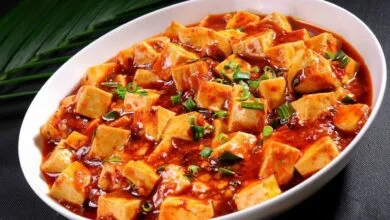
Table of Contents
Introduction
The century egg, also known as the hundred-year egg, millennium egg, or pidan, is a traditional Chinese delicacy with a rich history and unique preparation process. This article explores the origins of the century egg, how it is consumed, the chemical reactions involved in its creation, and the criteria for selecting quality century eggs. The century egg is celebrated not only for its distinctive taste and texture but also for its cultural significance and the meticulous craftsmanship involved in its production.
Origins of the Century Egg
The century egg’s history can be traced back several centuries, with various origin stories adding to its mystique. One popular legend dates back to the Ming Dynasty during the reign of Emperor Taichang (1620). According to this tale, a tea house owner in Wujiang, Jiangsu province, accidentally discovered the century egg. After discarding used tea leaves and ashes in a corner, the owner’s ducks laid eggs in the ash pile. When the owner later found the eggs and cracked them open, he discovered their unique appearance and aroma, leading to the creation of the first century eggs.
Another story attributes the invention of the century egg to Tianjin, approximately 200 years ago. A wealthy family stored lime and plant ash in a coffin to prevent moisture, and chickens accidentally laid eggs in it. Over time, these eggs transformed into century eggs, fascinating the villagers who tasted them. This method spread across the Jiangsu and Zhejiang regions, evolving into the refined production process we know today.
Beyond these legends, historical records suggest that the production and consumption of century eggs have been a part of Chinese culinary culture for at least several hundred years. The meticulous process of creating century eggs reflects the ingenuity and resourcefulness of ancient Chinese food preservation techniques, transforming simple ingredients into a delicacy with a unique flavor profile and texture.
How Century Eggs Are Consumed
Century eggs are versatile and can be enjoyed in various culinary forms. Here are some common ways to consume them:
- Direct Consumption: Century eggs can be eaten as they are, often paired with soy sauce, soy paste, or chili sauce. This method highlights their unique texture and flavor.
- Ginger and Beer Pairing: Some enjoy century eggs with slices of ginger or even soaked in beer, which can enhance their taste.
- Culinary Delights: Century eggs are featured in numerous recipes such as:
- Century Egg Tofu: Soft tofu topped with diced century eggs and seasoned with soy sauce and sesame oil.
- Sweet and Sour Century Egg: A dish where century eggs are prepared with a sweet and sour sauce.
- Three-Color Eggs: A combination of century eggs, salted eggs, and regular eggs in one dish.
- Century Egg and Lean Pork Congee: A popular Cantonese rice porridge made with century eggs and marinated lean pork.
Century eggs are celebrated for their distinctive taste and texture, which can be enjoyed in a variety of culinary contexts. Here are some common and popular ways to consume century eggs:
1. Direct Consumption:
One of the simplest ways to enjoy century eggs is to eat them as they are, typically accompanied by condiments such as soy sauce, soy paste, or chili sauce. This method allows for the appreciation of the egg’s unique flavor and texture.

2. Ginger and Beer Pairing:
For a traditional Chinese pairing, century eggs can be enjoyed with slices of fresh ginger. The spiciness of the ginger complements the rich, creamy texture of the egg. Some also enjoy soaking the eggs in beer, which can add a refreshing contrast to their savory taste.
3. Culinary Delights:
Century eggs are a versatile ingredient in Chinese cuisine and can be used in a variety of dishes. Here are a few examples:
- Century Egg Tofu: This dish features soft tofu topped with diced century eggs, often seasoned with soy sauce, sesame oil, and garnished with scallions. The smooth texture of the tofu contrasts nicely with the firmer texture of the century egg.
- Sweet and Sour Century Egg: In this dish, century eggs are cooked in a sweet and sour sauce made with ingredients such as vinegar, sugar, and sometimes tomatoes. This preparation adds a tangy flavor that complements the richness of the eggs.
- Three-Color Eggs: This visually striking dish combines century eggs, salted eggs, and regular eggs. The three types of eggs are often steamed together, creating a colorful and flavorful presentation.
- Century Egg and Lean Pork Congee: A classic Cantonese dish, this congee (rice porridge) is made with century eggs and marinated lean pork. The eggs add a unique flavor and texture to the creamy rice porridge, making it a comforting and hearty meal.
- Salads and Cold Dishes: Century eggs can also be used in salads and cold dishes. For example, they can be sliced and added to a cold noodle salad with vegetables and a tangy dressing, or used as a topping for cold tofu dishes.
- Appetizers and Side Dishes: Century eggs are often served as appetizers or side dishes in Chinese cuisine. They can be paired with pickled vegetables, served with cold cuts, or incorporated into various small plates in a traditional Chinese banquet.
The versatility of century eggs makes them a beloved ingredient in Chinese cuisine, appreciated for their ability to add depth of flavor and unique texture to a wide range of dishes.
Chemical Reactions in Century Egg Production
The production of century eggs involves a fascinating series of chemical reactions that transform the egg’s texture, color, and flavor. The primary chemical reactions are:
- Alkaline Transformation: Century eggs are traditionally made by coating eggs in a mixture of clay, ash, salt, quicklime, and rice hulls. This creates a highly alkaline environment (pH > 12), which initiates the chemical changes in the egg.
- Protein Denaturation: The alkaline conditions cause the proteins in the egg white and yolk to denature and coagulate. This process changes the egg white into a dark brown, translucent gel and the yolk into a creamy, dark green or gray substance.
- Formation of Sulfides: The sulfur compounds in the egg react with the iron and other metals naturally present in the yolk, forming black or green iron sulfide compounds. This reaction is responsible for the dark coloration of the yolk.
- Amination: The amino acids in the egg white undergo deamination, releasing ammonia, which contributes to the egg’s distinct pungent smell.
- Formation of Crystalline Patterns: The characteristic pine-needle-like crystalline structures on the egg white, known as «Songhua,» are formed when amino acids crystallize in the alkaline environment.

The transformation of a regular egg into a century egg involves a series of intricate chemical reactions that alter the egg’s texture, color, and flavor.
These chemical reactions not only transform the appearance and texture of the egg but also contribute to its unique flavor profile. The alkaline environment and the prolonged curing process create a complex interplay of flavors, resulting in the distinctive taste of century eggs.
Criteria for Selecting Century Eggs
Selecting high-quality century eggs requires careful attention to several key criteria. Here is a detailed guide to help you choose the best century eggs:
1. Appearance:
- Intact Shell: A high-quality century egg should have an intact shell with no cracks or moldy spots. Cracks in the shell can allow bacteria to enter, compromising the quality and safety of the egg.
- Color of the Shell: The color of the eggshell should be a light blue or greenish hue. This coloration indicates proper curing and is a sign of a well-made century egg.
2. Weight and Texture:
- Heaviness: When gently tossed in the hand, a good century egg feels heavy. This weight is due to the gelatinous interior created by the curing process.
- Bounce: A high-quality century egg will have a slight bounce when gently tossed. This bounce indicates the presence of a firm, gelatinous egg white and a creamy yolk.
- Lightness and No Bounce: If the egg feels light and has no bounce, it may indicate poor quality or insufficient curing. Such eggs are likely to have an inferior texture and flavor.
3. Sound Test:
- No Sound: Hold the egg close to your ear and gently shake it. A well-cured century egg should produce no sound. If you hear liquid sloshing inside, it indicates that the egg is not properly cured and may not have the desired texture or taste.
4. Translucence and Color:
- Translucence: Under light, a well-cured century egg will show a predominantly black or dark brown interior with translucent patterns. This translucence is a sign of proper protein denaturation and the formation of the characteristic gelatinous egg white.
- Color of the Yolk: The yolk of a high-quality century egg should be dark green or gray with a creamy texture. This coloration indicates the formation of iron sulfide compounds and the proper curing of the yolk.
5. Smell:
- Distinct Aroma: Century eggs have a distinct aroma due to the production of ammonia during the curing process. A high-quality century egg should have a strong, but not overpowering, ammonia smell. If the smell is too pungent or unpleasant, it may indicate poor quality or spoilage.
6. Crystalline Patterns:
- Pine-Needle Patterns: Look for the presence of pine-needle-like crystalline structures on the egg white, known as «Songhua» or «pine flower patterns.» These patterns are a sign of proper curing and the formation of amino acid crystals.
By paying attention to these criteria, you can select high-quality century eggs that offer the best texture, flavor, and overall eating experience.
Consumption and Nutritional Aspects
1. Nutritional Composition:
Century eggs are a source of protein, fats, and essential minerals. A study in the Journal of Food Composition and Analysis analyzed the nutritional composition of century eggs and found that they are rich in high-quality protein, with a balanced profile of essential amino acids. The fat content, primarily from the yolk, includes beneficial unsaturated fatty acids.
2. Health Benefits and Risks:
The consumption of century eggs has been associated with certain health benefits, including the presence of antioxidants and bioactive peptides formed during the preservation process. However, some concerns exist regarding the potential presence of heavy metals or contaminants from the traditional preservation mixture. A study in Food Control examined the levels of heavy metals in century eggs and concluded that while most commercially produced century eggs are safe, it is essential to monitor and regulate the production processes to minimize risks.
3. Sensory Evaluation:
The unique flavor, texture, and aroma of century eggs are central to their appeal. Sensory evaluation studies have been conducted to understand consumer preferences and the factors that influence the sensory characteristics of century eggs. Research in the Journal of Sensory Studies found that factors such as the type of preservation mixture, duration of preservation, and post-preservation processing significantly impact the sensory properties of century eggs.
Conclusion
The century egg is a remarkable example of culinary ingenuity, rooted in ancient practices and refined through generations. Its unique preparation process, involving complex chemical reactions, results in a delicacy that is enjoyed in various forms across Chinese cuisine. Understanding the origins, consumption methods, chemical transformations, and selection criteria can enhance one’s appreciation of this traditional food. Whether enjoyed on its own or as part of a dish, the century egg remains a testament to the rich cultural heritage and culinary creativity of China.

